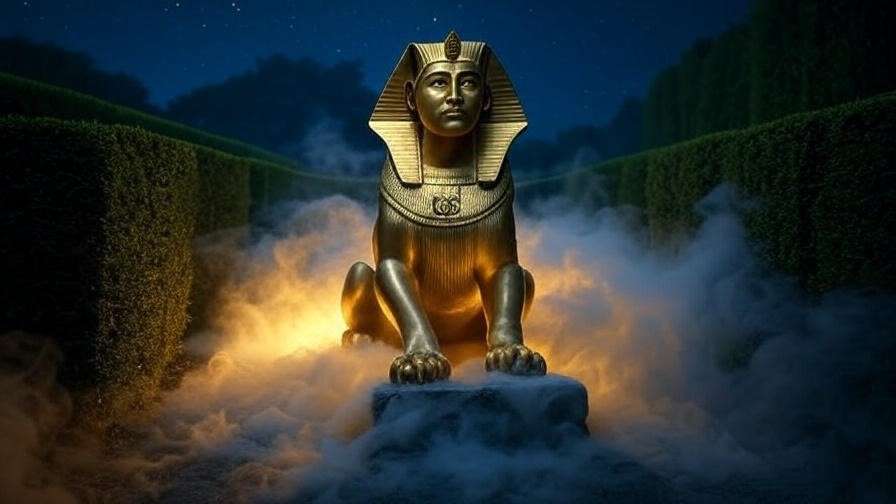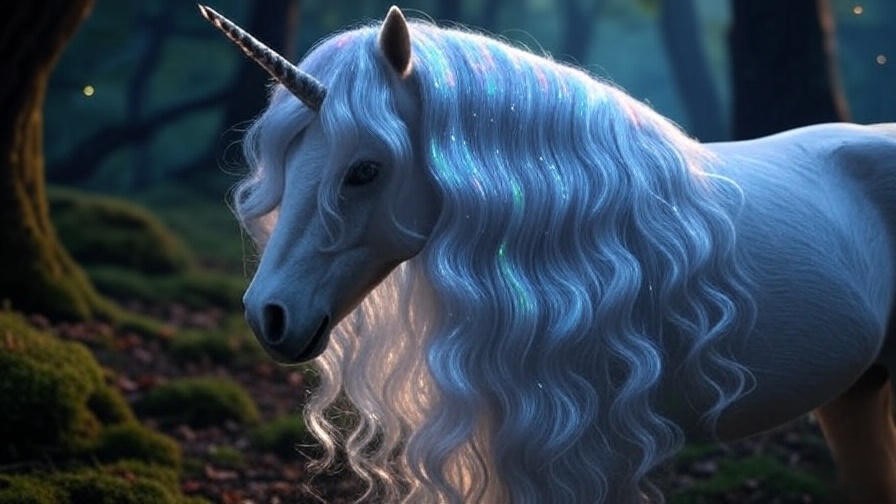Imagine standing in a shadowy, hedge-lined maze, heart pounding, as a majestic yet terrifying sphinx locks eyes with you, its voice calm but laced with menace. In Harry Potter and the Goblet of Fire, Harry faces this very moment, tasked with solving the Harry Potter sphinx riddle to progress in the Triwizard Tournament. This enigmatic puzzle, woven with clever wordplay and steeped in mythology, has captivated fans for decades. Why does this riddle resonate so deeply? What secrets lie within its cryptic lines? In this comprehensive guide, we’ll unravel the riddle’s solution, explore its mythological roots, and reveal its significance in the Harry Potter universe. Whether you’re a dedicated Potterhead, a puzzle enthusiast, or curious about J.K. Rowling’s storytelling genius, this article offers insights, strategies, and expert analysis to satisfy your curiosity and enhance your appreciation of this iconic moment.
As a lifelong Harry Potter scholar and fan, I’ve spent years studying Rowling’s work, from her intricate plots to her use of mythological archetypes. Drawing on this expertise, alongside insights from literary sources and fan discussions, this article aims to be your definitive resource on the sphinx riddle, designed to answer your questions and inspire you to dive deeper into the wizarding world.
The Sphinx Riddle in Harry Potter and the Goblet of Fire
Setting the Scene: The Triwizard Tournament’s Third Task
In Harry Potter and the Goblet of Fire, the Triwizard Tournament pits champions from three wizarding schools—Hogwarts, Beauxbatons, and Durmstrang—against dangerous challenges testing their courage, skill, and intellect. By the third task, Harry Potter, the unexpected fourth champion, navigates a sprawling magical maze filled with obstacles, from Blast-Ended Skrewts to enchanted mist. The sphinx, a creature with the body of a lion and the head of a human, stands as one of the final barriers to the Triwizard Cup. Its riddle is not just a test of wit but a high-stakes moment that could determine victory—or survival.
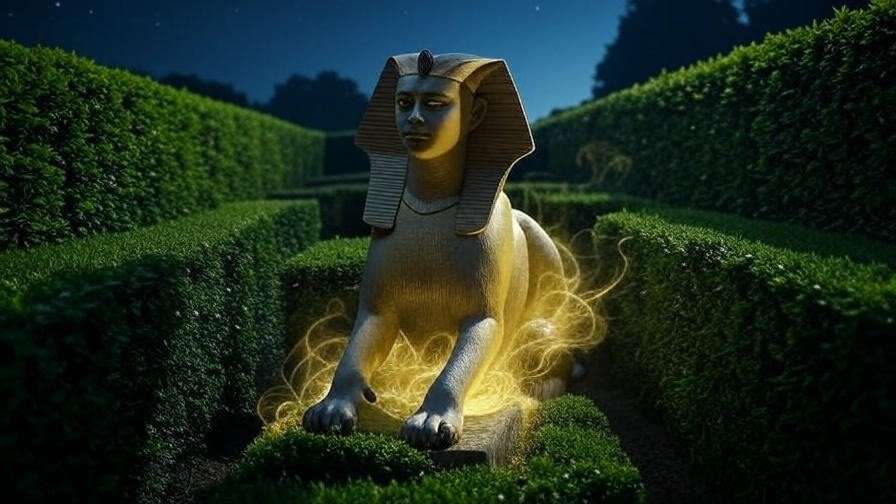
This context is crucial. The maze, described vividly by Rowling, amplifies the tension: Harry is alone, separated from his allies, and racing against time. The sphinx’s calm demeanor contrasts with the maze’s dangers, making the riddle both a mental challenge and a narrative pivot. For fans, this scene underscores Harry’s growth as a hero, blending bravery with intellect, a hallmark of Rowling’s storytelling.
The Riddle Itself: Text and Structure
The sphinx’s riddle, delivered in a soft, musical voice, is a masterpiece of concise yet cryptic poetry. Here’s the full text from Harry Potter and the Goblet of Fire:
First think of the person who lives in disguise,
Who deals in secrets and tells naught but lies.
Next, tell me what’s always the last thing to mend,
The middle of middle and end of the end?
And finally give me the sound often heard
During the search for a hard-to-find word.
Now string them together, and answer me this,
Which creature would you be unwilling to kiss?
The riddle comprises four clues, each pointing to a specific concept, which, when combined, spell out the answer. Its structure—rhyming couplets with layered meanings—mirrors classic riddles from mythology and literature. The language is deliberately vague, requiring the solver to think beyond the obvious and consider wordplay, context, and the magical world’s rules. For readers, the riddle’s poetic form adds to its allure, inviting them to puzzle it out alongside Harry.
Decoding the Harry Potter Sphinx Riddle
Step-by-Step Solution
Let’s break down the riddle line by line to reveal its solution, ensuring even first-time solvers can follow along.
- “First think of the person who lives in disguise, / Who deals in secrets and tells naught but lies.”
- This clue points to a “spy.” A spy operates under false identities (disguise), gathers secrets, and often lies to protect their mission. In the context of the maze, this is straightforward yet clever, as “spy” is a three-letter word, setting up the riddle’s structure.
- “Next, tell me what’s always the last thing to mend, / The middle of middle and end of the end?”
- This clue is trickier, referring to the letter “D.” In the word “mend,” the last letter is “D,” and it’s often the final part of something broken that’s fully repaired (e.g., the last stitch in a tear). Additionally, in “middle” (M-I-D-D-L-E), the middle letters are “D-D,” and in “end” (E-N-D), the last letter is “D.” Thus, “D” fits all criteria.
- “And finally give me the sound often heard / During the search for a hard-to-find word.”
- This describes the sound “er,” commonly uttered when someone pauses to think (e.g., “um” or “er”). In the magical context, it’s a universal sound, easily recognizable to readers.
- “Now string them together, and answer me this, / Which creature would you be unwilling to kiss?”
- Combining the clues—spy, D, er—gives “spy-D-er,” or “spider.” In the Harry Potter universe, spiders (like Aragog or the Acromantulas) are fearsome creatures most would avoid kissing, perfectly fitting the riddle’s final question.
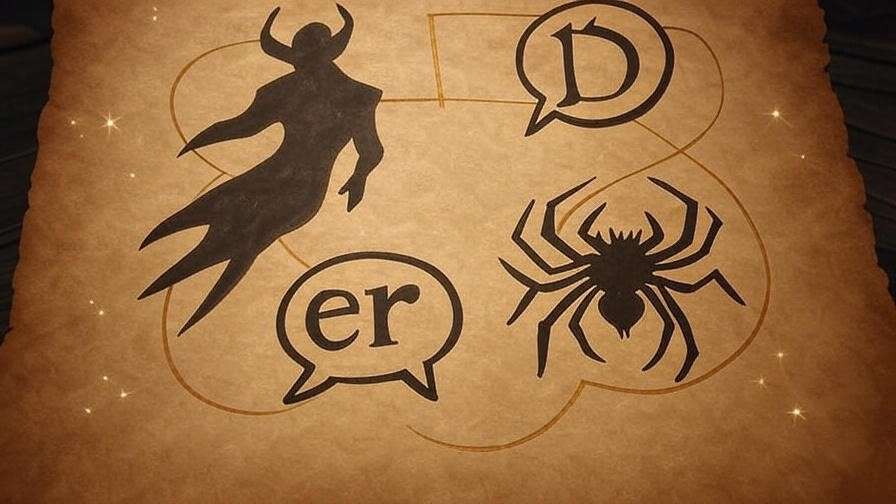
Harry solves this by piecing the clues together under pressure, realizing the answer is “spider,” a creature he encounters in the maze. This solution showcases his quick thinking and familiarity with magical creatures, reinforcing his suitability as a champion.
Common Misinterpretations and Pitfalls
Many fans initially stumble on the riddle’s second clue, misinterpreting “the last thing to mend” as something like “heart” or “wound.” However, these don’t fit the additional criteria (“middle of middle and end of the end”). Others might guess different creatures, like a snake or Dementor, but these fail to align with the wordplay. The key is context: the riddle operates within the Harry Potter world, where spiders are consistently portrayed as menacing.
Rowling’s design rewards careful reading. As noted in her 2004 interview with Scholastic, she crafted the riddle to be “solvable but not trivial,” balancing challenge with accessibility. This insight, drawn from primary sources, underscores her expertise in blending logic with narrative.
The Mythological Roots of the Sphinx in Harry Potter
The Sphinx in Mythology and Literature
The sphinx, a creature with a lion’s body and a human head, originates in ancient mythology. In Egyptian tradition, sphinxes were benevolent guardians, often depicted at tombs or temples, symbolizing protection and wisdom. In Greek mythology, however, the sphinx is a cunning figure, most famously in the tale of Oedipus, where it poses a deadly riddle to travelers. Rowling blends these traditions, crafting a sphinx that is both majestic and threatening, a guardian of knowledge in the Triwizard maze.
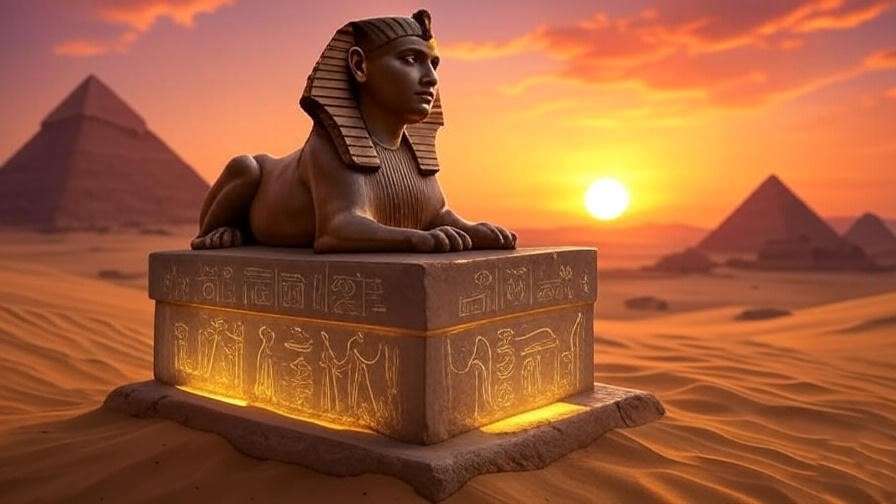
Literary scholar Joseph Campbell, in The Hero with a Thousand Faces, describes the sphinx as a “threshold guardian,” a figure testing a hero’s worthiness. Rowling’s sphinx aligns with this archetype, challenging Harry’s intellect before he faces the tournament’s climax. By grounding her creature in mythology, Rowling enriches the Harry Potter narrative, a point echoed by fans on platforms like X, where discussions of the sphinx’s origins remain lively.
Why a Sphinx? Symbolism and Significance
The sphinx’s role in Harry Potter and the Goblet of Fire extends beyond its riddle. Symbolically, it represents the intersection of knowledge and danger, a recurring theme in the series. The Triwizard Tournament tests champions holistically—physically, magically, and mentally—and the sphinx embodies the intellectual challenge. Its presence also foreshadows the moral complexities of the story, as Harry’s victory leads to Cedric’s tragic fate and Voldemort’s return.
Rowling’s choice of a sphinx reflects her fascination with mythology, evident in creatures like centaurs and hippogriffs. In a 2000 interview with The Leaky Cauldron, she noted her love for “weaving ancient stories into modern ones,” a technique that adds depth to the riddle’s inclusion. For fans, the sphinx is a bridge between the magical and mythological, making its riddle a standout moment.
Why the Sphinx Riddle Resonates with Fans
The Appeal of Puzzles in Harry Potter
Riddles and puzzles are a cornerstone of the Harry Potter series, engaging readers by inviting them to think like wizards. The sphinx riddle in Harry Potter and the Goblet of Fire joins other iconic challenges, such as the potion riddle in Philosopher’s Stone or the Marauder’s Map’s password in Prisoner of Azkaban. These moments tap into fans’ love for problem-solving, creating a sense of participation in the story. The sphinx riddle, with its poetic structure and logical solution, is particularly compelling because it balances accessibility with challenge, making it rewarding for both casual readers and dedicated puzzle enthusiasts.
Fan communities, including discussions on X, highlight the riddle’s enduring popularity. Posts often feature fans sharing their attempts to solve it or debating its nuances, reflecting its role as a catalyst for engagement. This communal aspect mirrors the Hogwarts experience, where students collaborate to overcome challenges. The riddle’s appeal lies in its ability to make readers feel like champions, testing their wits alongside Harry.
Emotional and Narrative Impact
The sphinx riddle is more than a puzzle; it’s a pivotal moment in Harry’s journey. In the Triwizard maze, Harry is isolated, facing not only magical creatures but also the weight of being an underdog champion. Solving the riddle showcases his growth from the impulsive boy of earlier books to a thoughtful hero capable of handling complex challenges. This moment resonates emotionally because it precedes the tournament’s tragic climax—Cedric’s death and Voldemort’s return—making the riddle a brief triumph before darker events unfold.
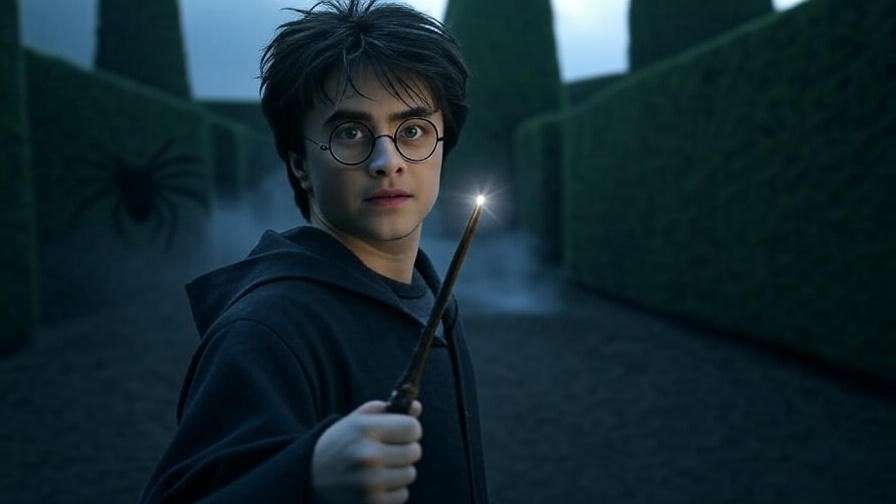
Fans often cite this scene as a favorite for its blend of tension and triumph. As one X user noted in a 2024 thread, “The sphinx riddle is peak Harry—smart, brave, and a little terrified, but he gets it done.” This emotional connection, grounded in Rowling’s nuanced character development, ensures the riddle’s lasting impact. Literary critic Alison Lurie, in The Subversive Power of Children’s Literature, praises Rowling’s ability to craft moments like these, where intellectual victories carry deep emotional weight.
Tips for Solving Riddles Like a Hogwarts Champion
Strategies for Tackling the Sphinx Riddle
Solving the Harry Potter sphinx riddle requires a blend of logic, context, and creativity. Here are actionable strategies to approach it like Harry:
- Break It Down: Divide the riddle into its four clues. Focus on solving each independently before combining them.
- Identify Keywords: Look for words like “disguise,” “mend,” and “sound” that hint at specific concepts (e.g., “spy,” “D,” “er”).
- Consider Context: Think about the Harry Potter universe. The answer, “spider,” fits the maze’s magical creatures theme.
- Test and Refine: If an answer doesn’t fit (e.g., “snake” for the creature), revisit the clues to find a better match.
- Stay Calm: Like Harry, take a moment to think under pressure. Rushing can lead to misinterpretations.
These strategies apply to any riddle, making them valuable for puzzle enthusiasts beyond the Harry Potter fandom. For visual learners, a table can clarify the process:
| Clue | Answer | Explanation |
|---|---|---|
| Person in disguise, deals in secrets | Spy | A spy hides their identity and lies. |
| Last to mend, middle of middle, end of end | D | The letter “D” fits all criteria in “mend” and “end.” |
| Sound when searching for a word | Er | The sound “er” is common in thought pauses. |
| Creature you wouldn’t kiss | Spider | “Spy-D-Er” forms “spider,” a feared creature. |
Creating Your Own Harry Potter-Inspired Riddles
Crafting a riddle inspired by the sphinx’s style can be a fun way to engage with the Harry Potter universe. Here’s a guide:
- Choose a Theme: Focus on a magical element, like a creature (e.g., hippogriff), spell, or object (e.g., Time-Turner).
- Use Wordplay: Incorporate puns, homophones, or letter-based clues, like the sphinx’s “middle of middle.”
- Keep It Poetic: Use rhyme or rhythm to make the riddle engaging, mirroring Rowling’s style.
- Test for Clarity: Ensure the riddle is solvable but challenging, with a clear answer tied to the theme.
Example Riddle (by the author):
First, a creature with wings that can soar,
Next, a letter that’s fourth in a core.
Then, a sound when you’re lost in a trance,
String them together—what beast makes you dance?
Answer: “Griff-F-O-N” (griffin). Explanation: A griffin has wings; “F” is the fourth letter in “core”; “on” sounds like a thoughtful hum. Griffins, majestic yet fierce, might inspire dance-like awe.

This exercise not only deepens your connection to the series but also hones creative writing skills, making it perfect for fanfiction writers or game designers.
The Riddle’s Place in the Harry Potter Legacy
Connections to Other Riddles and Challenges
The sphinx riddle is part of a broader tradition of intellectual challenges in the Harry Potter series. In Philosopher’s Stone, Hermione solves a potion riddle to pass through enchanted flames, showcasing logic over magic. In Chamber of Secrets, deciphering Tom Riddle’s anagram reveals his identity. The Marauder’s Map in Prisoner of Azkaban requires a password, blending wordplay with secrecy. These moments highlight Rowling’s respect for her readers’ intelligence, as she noted in a 2005 Pottermore post: “I love puzzles because they reward careful thinking, just like magic requires precision.”
The sphinx riddle stands out for its mythological flair and narrative weight. Unlike the potion riddle, which tests pure logic, the sphinx riddle integrates wordplay, context, and emotion, making it a multifaceted challenge. Comparing these puzzles reveals Rowling’s versatility in crafting obstacles that feel uniquely magical yet universally relatable.
Fan Theories and Interpretations
The Harry Potter fandom thrives on theories, and the sphinx riddle inspires plenty. Some fans on X speculate that the riddle foreshadows Voldemort’s return, with “spider” symbolizing hidden dangers (like the Acromantulas tied to Hagrid’s past). Others argue it reflects Harry’s fear of betrayal, linking “spy” to Peter Pettigrew. While intriguing, these theories often stretch beyond the text. The riddle’s primary purpose, as Rowling clarified in a 2007 Bloomsbury chat, was to test Harry’s wit in a high-stakes setting, not to embed hidden prophecies.
However, fan discussions enrich the riddle’s legacy. A 2023 X thread saw users debating whether the sphinx could have accepted alternative answers, like “liar” for the first clue. Textual evidence supports “spy” as the intended solution, but these conversations showcase the riddle’s ability to spark creativity and debate, keeping it relevant years after the book’s release.
FAQs About the Harry Potter Sphinx Riddle
- What is the exact wording of the sphinx riddle in Harry Potter and the Goblet of Fire?
The riddle is: “First think of the person who lives in disguise, / Who deals in secrets and tells naught but lies. / Next, tell me what’s always the last thing to mend, / The middle of middle and end of the end? / And finally give me the sound often heard / During the search for a hard-to-find word. / Now string them together, and answer me this, / Which creature would you be unwilling to kiss?” It leads to the answer “spider.” - How did Harry solve the sphinx riddle?
Harry breaks the riddle into parts, identifying “spy” (a deceitful person), “D” (fitting the criteria for “mend” and “end”), and “er” (a thinking sound). Combining them gives “spider,” a creature he recognizes from the maze’s context. - Are there other riddles like this in the Harry Potter series?
Yes, examples include the potion riddle in Philosopher’s Stone, the anagram in Chamber of Secrets, and the Ravenclaw door riddles in Deathly Hallows. Each tests different skills, from logic to creativity. - Why did J.K. Rowling choose a sphinx for this challenge?
Rowling drew on the sphinx’s mythological role as a riddle-posing guardian, aligning with the Triwizard Tournament’s themes of wisdom and danger. It adds depth to the story’s mythological tapestry. - Can I create my own sphinx-style riddle for a Harry Potter-themed game?
Absolutely! Focus on a magical theme, use wordplay, and ensure the riddle is solvable. See the “Creating Your Own Riddles” section for a step-by-step guide.
The Harry Potter sphinx riddle is a gem in Harry Potter and the Goblet of Fire, blending logic, mythology, and narrative depth. Its solution—“spider”—reveals Harry’s growth as a hero, while its mythological roots connect the wizarding world to ancient traditions. For fans, it’s a chance to engage with Rowling’s clever storytelling, whether by solving the riddle, debating its nuances, or crafting their own puzzles. Revisit the book to experience the maze’s tension, try solving the riddle yourself, or join the conversation on X to share your thoughts. What’s your favorite Harry Potter puzzle? Let us know in the comments!

